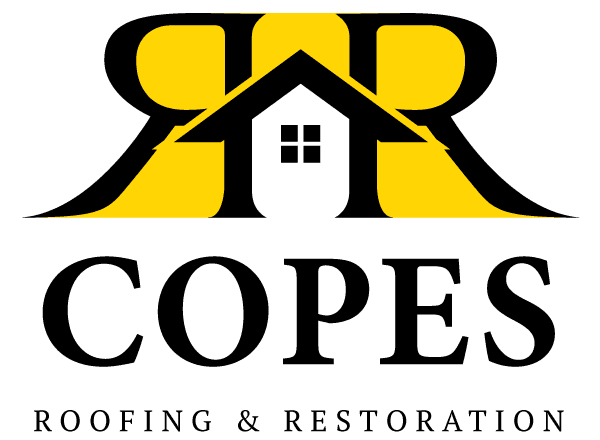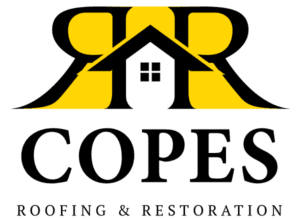Wind damage on residential roofs is a common yet often misunderstood problem that can lead to serious structural issues if left unaddressed. Understanding how to identify and document these issues is crucial for maintaining your home’s integrity and ensuring successful insurance claims.
For homeowners, being able to recognize the signs of wind damage early can mean the difference between a simple roof repair and a complete roof replacement. This guide will help you understand what wind damage looks like, how to identify it, and what steps to take when you spot potential issues.
Understanding How Strong Winds Affect Your Roof
Wind damage occurs when strong gusts create uplift forces that compromise roofing materials and structural components. These forces can work gradually over time or cause immediate damage during severe weather events. The damage pattern often appears random, but it typically follows specific physical principles based on wind direction, roof design, and the age of roofing materials.
4 Common Areas Most Vulnerable to Wind Damage
- Roof Corners and Edges: These areas experience the highest wind pressure and uplift forces, making them particularly susceptible to damage. Shingles in these locations often show the first signs of lifting or detachment.
- Ridgelines and Hips: The highest points of your roof face direct wind exposure, making them vulnerable to material loss and damage. These areas require special attention during roof inspections.
- Valleys and Transitions: Areas where roof slopes meet create natural channels for wind forces, potentially causing material separation and water intrusion points.
- Perimeter Flashing: Metal flashing around chimneys, vents, and other roof penetrations can loosen or detach under strong winds, creating entry points for water.
5 Common Signs of Wind Damage
Missing or Damaged Shingles
Missing shingles create vulnerable spots where water can directly penetrate your roof’s structure. Wind damage often appears as dark patches or exposed underlayment where shingles once were. Even if shingles are only partially detached, they can no longer effectively protect your roof from the elements.
Granule Loss and Surface Deterioration
Granule loss appears as bald spots on asphalt shingles where the protective mineral coating has worn away. You might notice these granules collecting in gutters or at the base of downspouts after strong winds. This type of wind damage accelerates shingle aging and reduces their ability to protect against UV rays and water damage.
Curling and Lifted Edges
Wind can gradually force shingle edges to curl upward or lift away from the roof surface. These lifted areas create entry points for wind-driven rain and can worsen during subsequent storms. Look for shingles that appear wavy or don’t lay flat against the roof.
Damaged or Loose Flashing
Flashing around chimneys, vents, and valleys can become loose or damaged during high winds. This type of wind damage often appears as bent metal pieces, gaps between the flashing and roof surface, or completely missing sections. Compromised flashing creates direct paths for water to enter your home.
Dented or Damaged Vents
Strong winds can carry debris that dents or damages roof vents and other protrusions. Check for bent vent covers, damaged seals around pipe boots, or loose ventilation components. These issues often indicate broader wind damage across the roof surface.
How to Safely Check Your Roof for Wind Damage
- Ground-Level Inspection: Start by walking around your home’s perimeter with binoculars. Look for obvious signs of damage like missing shingles or damaged flashing. This method keeps you safely on the ground while still allowing a detailed view.
- Document Everything: Take clear photos of any visible damage you spot, including wide shots and close-ups. These will be valuable for insurance claims and professional roofing contractor estimates.
- Check Your Gutters: Examine gutters and downspouts for granules or pieces of roofing material, which can indicate damage above. Excessive granule loss often suggests aging or damaged shingles.
- Interior Inspection: Look for water stains on ceilings or walls, particularly after strong winds or strong storms. These could indicate roof damage allowing water infiltration.
- Professional Inspection: Contact a licensed roofing contractor for a thorough inspection if you notice any concerning signs. They can safely access and examine areas you can’t see from the ground.
- Safety First: Never attempt to climb onto your roof during or immediately after severe weather. Let professionals handle any necessary up-close inspections.
4 Benefits of Hiring a Roofing Contractor for Wind Damage Assessment
Professional Expertise and Experience
Professional roofers have extensive training in identifying all types of wind damage, including subtle signs that homeowners might miss. They understand how different roofing materials react to wind forces and can spot potential problems before they become major issues. Their experience allows them to differentiate between normal wear and actual wind damage, which is crucial for insurance claims.
Safety and Equipment
Professional contractors have the proper safety equipment and training to inspect roofs without risking injury. They use specialized tools and safety gear to access all areas of the roof safely, including steep slopes and hard-to-reach spaces. This professional approach ensures a thorough inspection while maintaining compliance with safety regulations.
Insurance Claim Assistance
Roofing contractors can provide detailed documentation and expert assessments that insurance companies require for wind damage claims. They understand what insurance adjusters look for and can help ensure all damage is properly documented and explained. Their professional reports often carry more weight with insurance companies than homeowner assessments.
Comprehensive Inspection
Professional roofers conduct thorough inspections that go beyond surface-level checks. They examine the entire roofing system, including underlayment, decking, and ventilation components. This comprehensive approach helps identify hidden wind damage that might not be visible from the ground.
6 Ways to Protect Your Roof From Wind Damage
- Schedule Regular Inspections: Have your roof professionally inspected at least once a year and after any major storms. Regular maintenance can identify potential weaknesses before they become serious problems.
- Maintain Trees and Landscaping: Trim branches that hang over your roof and remove dead trees that could fall during strong winds. Keep your yard clear of loose items that could become projectiles during severe storms.
- Install Wind-Resistant Materials: When it’s time to replace your roof, choose materials rated for high wind resistance. Consider upgrading to impact-resistant shingles in areas prone to severe weather.
- Secure Loose Materials: Ensure all roofing materials, including flashing and vents, are properly secured. Replace any missing or damaged fasteners promptly.
- Clean Gutters Regularly: Keep gutters and downspouts clear of debris to prevent water backup and additional stress on roofing materials during high winds.
- Address Minor Issues Promptly: Don’t wait to repair small problems like loose shingles or damaged flashing. Minor issues can quickly become major problems during strong winds.
When Should You Consider a Roof Replacement
Age-Related Deterioration
Most asphalt shingle roofs last 20-25 years under normal conditions, but repeated wind damage can significantly shorten this lifespan. If your roof is approaching this age and showing multiple signs of wind damage, replacement might be more cost-effective than continued repairs. Consider your roof’s age alongside its current condition when making this decision.
Widespread Damage Patterns
When wind damage affects more than 30% of your roof’s surface, replacement often becomes more practical than repairs. Multiple patches of missing roof shingles, extensive granule loss, or widespread lifting indicate systemic problems that patch repairs can’t effectively address. These patterns suggest your roof’s overall integrity has been compromised.
Structural Concerns
Severe wind damage can cause underlying structural damage, which can affect the decking and support system. Signs include sagging areas, daylight visible through the roof boards, or moisture damage in the attic. These structural issues require immediate attention and often necessitate complete roof replacement.
Conclusion
Understanding and addressing wind damage is crucial for maintaining your roof’s integrity and protecting your home’s value. Regular inspections, prompt repairs, and professional assessments can help prevent minor wind damage from escalating into costly repairs.
For expert assessment of potential wind damage and professional repairs, contact Cope’s R&R Construction today. Visit our Facebook page for more helpful roofing tips, recent project showcases, and to stay updated on our latest services and special offers.



